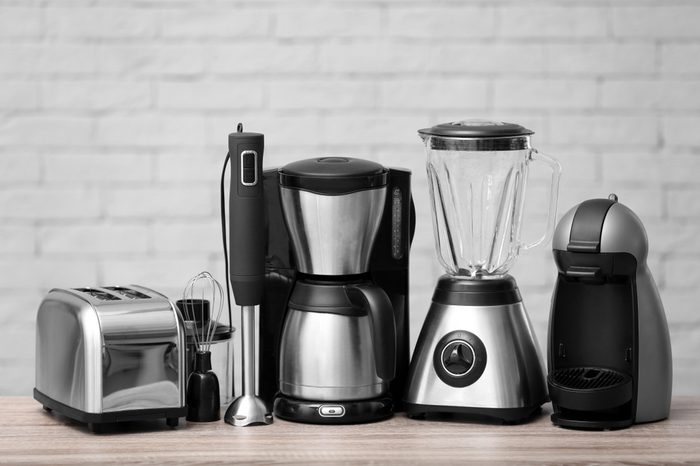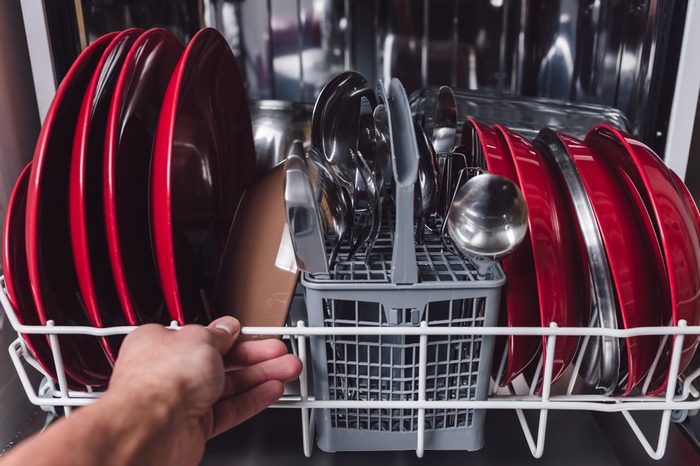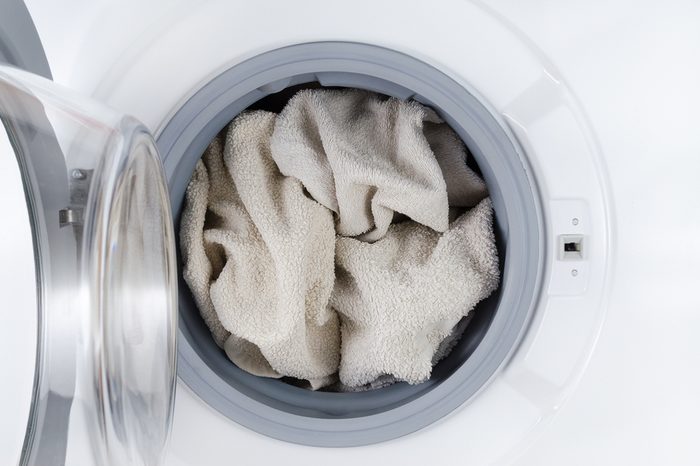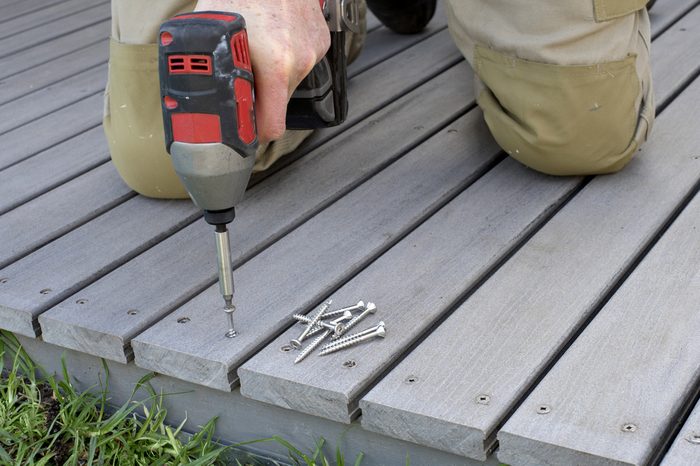
Murphy’s Law is real
There are two things in life you can absolutely count on: 1. The sun will rise in the morning and 2. That new expensive thing that you just bought is going to break.
But don’t go out and waste a ton of money on a new one—or a ton of time waiting for someone to show up and fix it. We’ve done some digging to find simple DIY repair tricks that require almost no money and just a little bit of patience. And if that fails, here’s the best time to buy appliances.

Dishwasher
Dishwashers are great… unless they’re not actually cleaning anything. Turns out there are many common issues with dishwashers and many of them don’t need to involve a plumber. Here’s a fix for machines that leave dishes dirty or covered in residue, according to Digital Trends: “Check for any grease, debris, or blockages in the strainer screen and door gasket. The culprit could also be your spray arms, so try to spin the bottom and top arms with your hand to make sure they spin easily. If neither do—or if they’re covered in dirt or funk—you may need to clean them. Remove the arms and gently clean them with a toothbrush and a pipe-cleaner. Once you replace them, try running a clean cycle, and see if your dishes fare any better.” Check out all of the things you didn’t know your dishwasher could do.

Computer
If there is something driving you nuts about your computer—it’s slow, it’s frozen, the trackpad isn’t working—there is a very, very good chance that someone on Ifixit.com’s Answer Forum has had the very same problem and figured out how to fix it. And happily posted their solution. Best part? The information—and often the fixes—are completely free.

Kitchen sink
The drip-drip-drip of a leaky faucet will drive you nuts, as will your ever-increasing water bills. Fixing this problem is totally doable, but will take a little time. DIY Network offers an excellent step-by-step guide to replacing a faucet. You will need specific plumbing materials and tools to do it, so be sure to factor in some time and money at the hardware store before going at it solo.

Clothes dryer
A drum that doesn’t spin might seem like a clear sign that it’s “need to buy a new one” time. But actually, it’s a simple fix, according to the DIY Network. The likely culprit is a busted belt. To replace it, you’ll need to remove the dryer lid and front cover, remove the drum, loop the new belt on the drum and drive shaft of the machine, and reassemble. That’s the quickie explanation—DIY Network offers very clear step-by-step instructions with photos to guide you along. You might get sweaty doing this fix, but sweaty is better than broke.

Refrigerator
Is the door not staying closed, or is the fridge having problems maintaining a steady cool temp inside? A likely culprit is a worn-out door gasket (the rubber lining around the perimeter of the door.) After buying a new one, the next steps are quite simple, as illustrated by Family Handyman: “Lift the inside edge of the old gasket to reveal the screws locking the gasket into the retainer, then loosen them. Remove the old refrigerator door gasket by grabbing the inside flange of the gasket and pulling it back. Using a properly sized hex head nut driver, loosen—but don’t remove—the retainer screws around the perimeter of the door and pull the old gasket off.” After that, replace with the new gasket starting at the top corner and work your way around fastening it.

Washing machine
Family Handyman offers a bunch of do-it-yourself advice for common washing machine problems that range from the intricate, like replacing a burned-out motor, to the simple, like stopping your machine from rocking and clanging like an irritated R2-D2. The likely culprit, according to The Family Handyman, is that the machine isn’t level. To fix this, you’ll need a pry bar, a block of wood, a wrench, and a level. First, “Lift the machine slightly with a pry bar to take the weight off the front legs, then turn the legs until the side of the washer is plumb. Adjust the front legs to make the machine level across the front and from front to back.” Next, the site instructs, “[T]ighten the locking nut up against the frame of the washing machine to keep the leg from turning.” Next, check out the back legs: “Most washing machines have self-adjusting rear legs that level from side to side, but dirt, lint, and rust may keep them from working properly. If the back isn’t level, tip the washing machine up a few inches and then set it back down so that the weight of the machine loosens the legs.”

Cell phone screen
Unless you never take your cell phone out of its box, it is very likely that one terrible day it will slip out of your hands and wind up with a cracked screen. Did it shatter into a million pieces? Sorry, there’s no DIY fix for that; you’re going to need to bring it into the shop. But if you don’t have the funds and the crack isn’t that bad, Gotta Be Mobile has a clever and super cheap solution: “Clean the screen as best you can and then place a wide piece of packaging tape over the screen. Trim off any excess tape and you should be able to continue using the phone. This will prevent the crack from growing and parts of the glass from falling off onto your lap or into your finger.”

Gas oven
If you turn the nob and you hear the igniter clicking but get no flame, try these Family Handyman tips before you call in the experts: Clean the spark igniter (the nub near the base of the burner) and make sure the tiny burner holes aren’t clogged using a needle. If that doesn’t work, don’t give up hope: Click here for a couple of more troubleshooting tips that could get you cooking again.

Deck
It’s not technically an appliance, but it is a vital part of many a happy home. Building or repairing a backyard deck can put a serious dent in your bank account, so if you’re comfortable swinging a hammer and made it through shop class with all of your fingers attached, you may want to check out the excellent and free online carpentry classes offered by Alison, and give it a shot yourself. The program promises to teach you “how to measure, cut, drill, join, fasten, finish and other woodwork skills.” Just add tools and go!

Your brain
Perhaps the most important “appliance” in your house! Keep your gray matter in tip-top shape by giving it regular exercise. A great way to do that is signing up for free online continuing education course from OpenCourseWare. OCW was launched in 2002 by MIT to “enhance human learning worldwide by the availability of a web of knowledge.” Who is eligible to take these courses? You! According to the site, “Anyone can access OpenCourseWare online, whether they are a registered student or not. While participants do not receive certification or credit for the work, it provides the opportunity to take free college courses online on any topic desired, better preparing them for an eventual degree, or offering the chance for continued learning and professional development.” Next, check out the home repairs anyone can do.